We often hear the saying, “You are what you eat.” But are there any similarities between Nature and us? There are many organs in our body that resemble fruits and vegetables in Nature. Maybe this is a coincidence. Or maybe not.
Walnuts
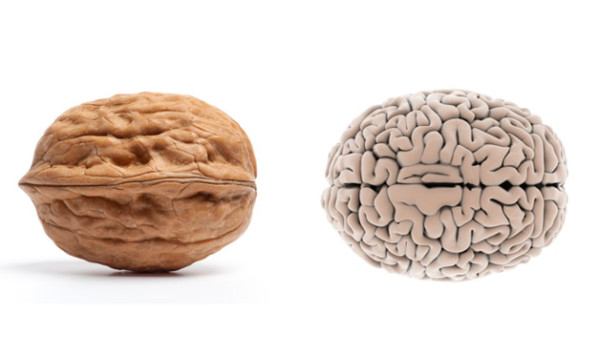
Walnuts look very similar to the brain, with a left and right hemisphere, upper cerebrums and lower cerebellums. The wrinkles or folds on the walnut are similar to those of the neo-cortex. Scientists claim that Walnuts help develop neuron-transmitters for brain function. Walnuts help ward off dementia; by extracting and breaking down the protein based plaques associated with Alzheimer’s diseases, according to a study by Dr. James Joseph of Tuft University. Walnuts can also prevent you from becoming depressed and boost your mental well-being.
Walnuts are nicknamed “brain food,” since they have a very high content of omega-3 fatty acids, which help support healthy brain function.
Mushrooms
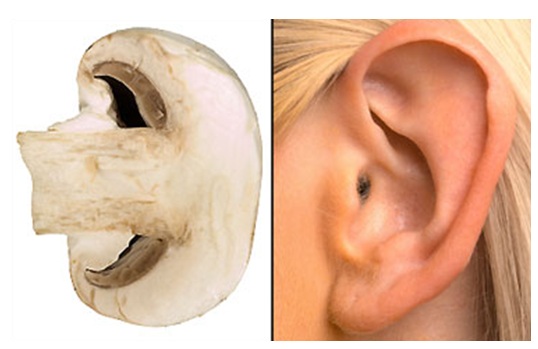
Mushrooms when sliced in half resemble the shape of the human ear. Mushrooms improve hearing abilities, since they contain Vitamin D, which is healthy for bones, especially the 3 tiny bones in the ear that transmit sound to the brain.
Research has also shown that bilateral cochlear deafness is associated with Vitamin D deficiency. Adding mushrooms to your diet may help with hearing problems.
Grapes
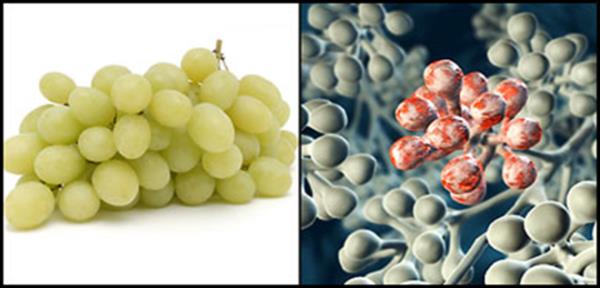
Grapes resembles the alveoli of the lungs. The lungs are made of branches of ever-smaller airways that finish up with tiny branches of tissue called alveoli. These structures allow oxygen to pass from the lungs to the blood stream.
A diet high in fresh grapes has shown to reduce the risk of lung cancer and emphysema. Grape seeds also contain a chemical called proanthocyanidin, which is thought to reduce the severity of asthma triggered by allergy.
Tomatoes
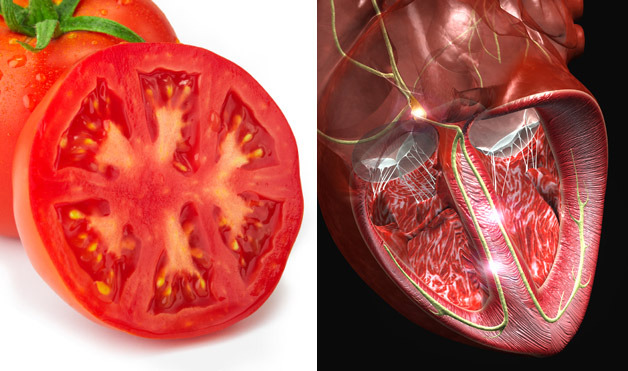
Tomatoes are red in color have chambers just like the heart. Tomatoes are rich in lycopene, which is good for the blood and the heart. They may reduce the risk of heart disease in men and women.. Adding olive oil or avocado to tomatoes increases the ability of the body to absorb lycopene by 10 times.
Kidneys
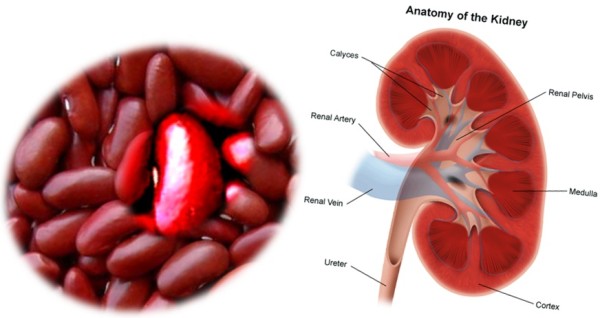
Kidney beans are shaped exactly like the human kidneys (which is where they get their name from). They are packed with vitamins and minerals and help maintain kidney function . Kidney beans are among the richest sources of plant-based protein.
Kidney beans are are rich in soluble and insoluble fiber, which help lower cholesterol. Their high fiber content also prevent blood sugar levels from rising too rapidly after a meal, making them an excellent food choice to manage diabetes, insulin resistance or hypoglycemia.
In our next post, we will look at a few more similarities between fruits and vegetables and the organs in our body.


Great post and really effective graphics, keep em coming!!
Hi,
Glad you liked it. Thanks for your feedback. Much appreciated!